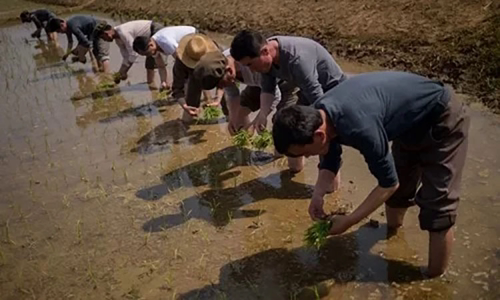This year's harvest in North Korea is expected to fall below the average due to the drought, exacerbating food shortages.
Geoglam, a Swiss-based agriculture watchdog, analyzed satellite images showing that drought has hit the area known as the "granary", the main food producing region. in North Korea.

Korean farmers transplant rice in Nampho on 12/5 Photo: AFP
The main harvest in the provinces of South Hwanghae, North Hwanghae and Nam Pyongyan has been completed but estimates are below average. Geoglam said the "unstable rainfall and low water reserves in the summer" were the cause of the crop failure, and predicted that North Korea's food situation would hardly improve this year.
North Korea experienced severe droughts in the spring and summer. In September, Typhoon Lingling also flooded many agricultural areas of the country. In addition, North Korea also has to deal with African swine cholera, causing a sharp decline in pork production.
The diet of about 70% of the Korean population has been reduced from 550 g / person to 300 g / person, due to low food production in the harvest earlier this year. In September, the United Nations Food and Agriculture Organization (FAO) said low rice and maize production made more than 10 million North Koreans in need of emergency assistance.
The United Nations says that four in 10 Koreans need food aid and that its harvest is at its lowest level in five years. Food shortages are exacerbated when North Korea is subject to international sanctions related to its nuclear weapons program.
China and several other countries have provided food aid to North Korea. However, the country refused to accept 50,000 tons of rice from South Korea.



 AmandaHudson
AmandaHudson







